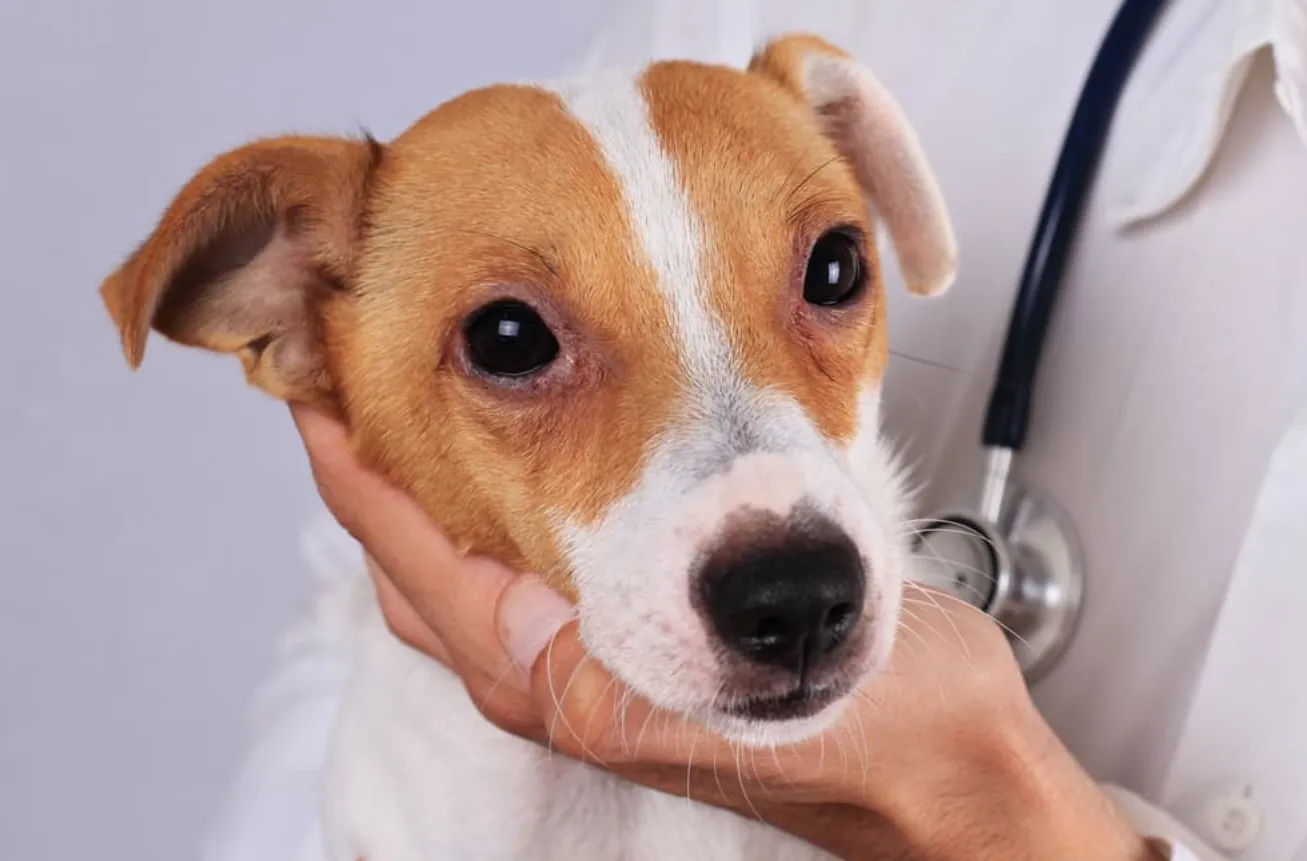
Have you ever looked at your furry friend and noticed their eyes looking a bit bloodshot? Those adorable puppy eyes shouldn’t be red – and when they are, it’s your dog’s way of telling you something isn’t quite right. Let’s explore why this happens and what you can do about it.
Contents
What Healthy Dog Eyes Should Look Like
Before diving into red eyes, it’s important to know what’s normal. Healthy dog eyes should be clear, bright, and free from discharge. The whites of their eyes should actually be white, not yellow or red. Different breeds may have varying eye shapes and sizes, but redness is rarely normal.
Common Causes of Red Eyes in Dogs
Allergies
Just like humans, dogs can suffer from seasonal allergies. Pollen, dust, or even certain cleaning products can irritate your dog’s eyes, causing redness and itchiness.
“Many dog owners don’t realize that their pets can be allergic to the same things we are,” says Milan Keim, dog expert and breeder at Kingdom Frenchies in Millersburg, Ohio. “French Bulldogs in particular tend to have sensitive systems that react to environmental triggers.”
Conjunctivitis
Commonly known as “pink eye,” conjunctivitis is an inflammation of the tissue that covers the eye and lines the eyelids. It can be caused by allergies, bacterial or viral infections, or even physical irritation.
Foreign Objects
Dogs love to stick their noses (and eyes) into everything! Sometimes redness is simply caused by something like dirt, grass seeds, or even their own hair getting into the eye.
Dry Eye
Keratoconjunctivitis sicca, or dry eye, occurs when a dog doesn’t produce enough tears. This condition is more common in certain breeds and can lead to chronic redness and irritation.
Breed-Specific Eye Issues
Some breeds are more prone to eye problems than others. Brachycephalic (flat-faced) breeds like French Bulldogs often experience more eye issues due to their facial structure.
“At Kingdom Frenchies, we’re particularly attentive to eye health in our breeding program,” Keim explains from her facility at 4392 County Road 160, Millersburg 44654, Ohio. “The shape of a Frenchie’s skull and the prominence of their eyes make them more susceptible to irritation and injury. When considering how long does Frenchie live – typically 10-12 years – proper eye care throughout their life can prevent vision problems that might affect their quality of life as they age.”
When to Seek Veterinary Care
While minor redness might resolve on its own, there are times when you should seek professional help immediately:
- If redness is accompanied by squinting or excessive blinking
- When there’s discharge (especially if it’s yellow, green, or thick)
- If your dog is pawing at their eyes or rubbing their face on furniture
- When the redness is accompanied by swelling
- If your dog seems to have vision problems
At-Home Care Tips
For minor cases of eye redness, there are some safe at-home care measures:
- Gently wipe away any discharge with a clean, damp cloth
- Keep hair trimmed around the eyes
- Use a cone or e-collar to prevent scratching if necessary
- Remove potential allergens from your home
“One simple tip I give to all dog owners is to use filtered water to rinse around the eyes,” suggests Keim. “Tap water can contain chemicals that might further irritate sensitive eyes.”
Prevention Is Key
Routine eye care can prevent many problems before they start:
- Regular check-ups with your veterinarian
- Proper grooming to keep hair away from eyes
- Using dog-safe shampoos and cleaning products
- Keeping your dog’s living area clean and dust-free
Milan Keim emphasizes prevention as the best approach: “At Kingdom Frenchies, we teach our clients that proper eye hygiene is just as important as dental care or ear cleaning. For French Bulldogs especially, daily gentle cleaning around the eye folds can prevent bacteria buildup that leads to infections.”
Final Thoughts
Red eyes in dogs can range from a minor, temporary irritation to a sign of a serious condition. The key is to pay attention to other symptoms and know when to seek professional help. With proper care and attention, most eye issues can be resolved before they become serious problems.
Remember that different breeds have different needs – what’s normal for one dog might be concerning for another. By understanding your particular dog’s baseline, you’ll be better equipped to notice when something’s wrong, especially if your dog can’t sleep or shows other behavioral changes linked to discomfort.
As Milan Keim from Kingdom Frenchies likes to say, “The eyes truly are the windows to your dog’s health. When those windows look cloudy or red, it’s time to take a closer look at what’s going on.”